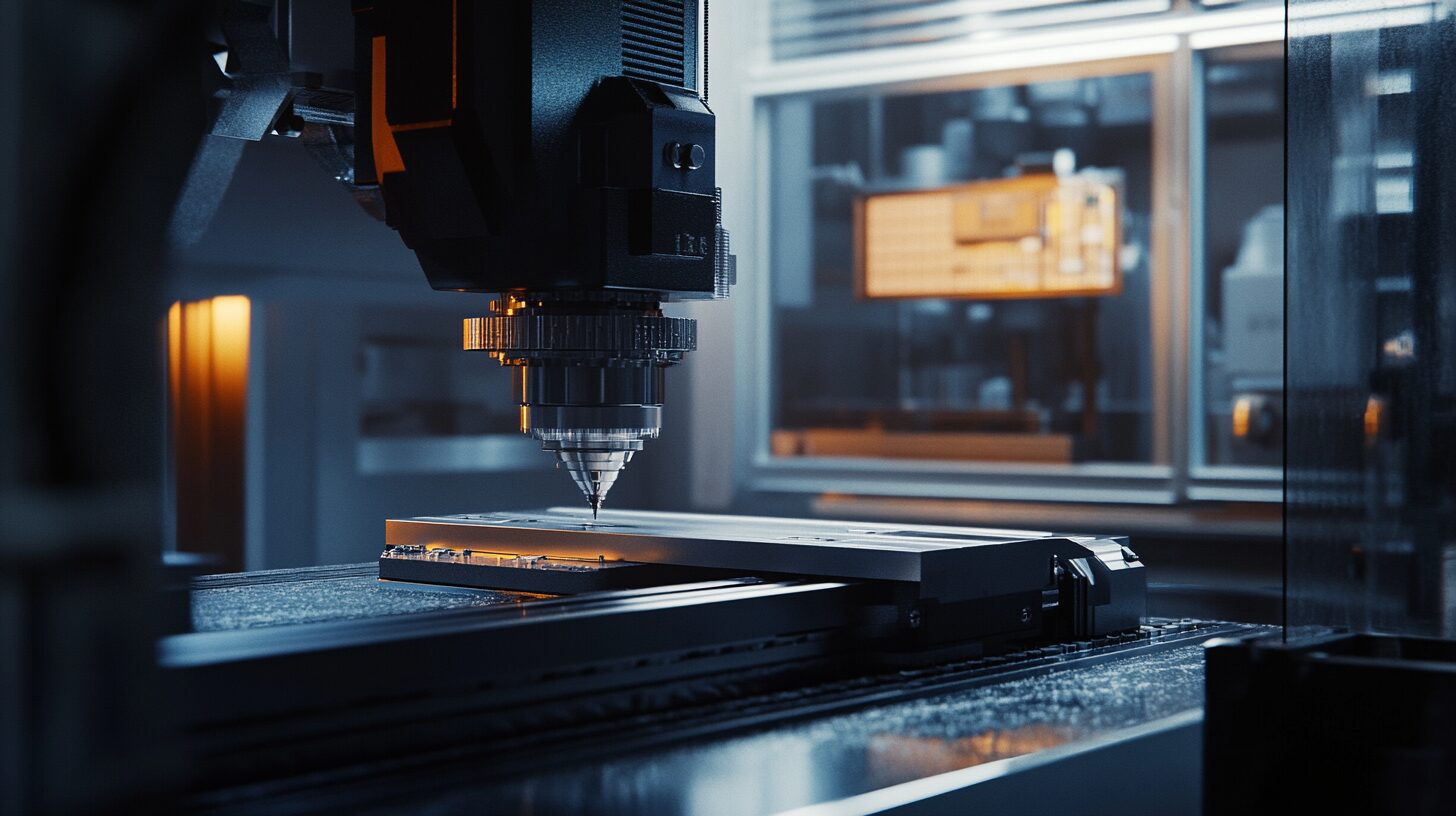The sweet spot in CNC machining, automation, and lean manufacturing lies in achieving a precise balance between accuracy, efficiency, and waste reduction. This balance ensures that production processes are optimized without overburdening resources or compromising flexibility.
CNC machining excels at delivering precision through computer-controlled systems, while automation enhances speed and consistency. Lean manufacturing complements these by eliminating non-value-added activities to improve overall efficiency.
Precision is foundational in CNC machining. Advanced programming enables machines to execute exact tool paths, reducing material waste and ensuring consistent quality. Efficiency is amplified when automation takes over repetitive tasks, such as part handling or tool changes, allowing operators to focus on complex problem-solving.
Lean principles ensure that every aspect of the process adds value by minimizing downtime, overproduction, and unnecessary movements.
The sweet spot emerges when these three elements—precision, efficiency, and waste reduction—are harmonized. Overemphasis on one aspect can disrupt the equilibrium. For instance, excessive automation may lead to rigidity, while extreme lean practices can compromise adaptability. The ideal approach integrates these elements to achieve maximum productivity with minimal waste.
“The sweet spot is where precision meets efficiency without sacrificing flexibility. It’s about doing more with less while maintaining quality.” — John Smith, Manufacturing Consultant
Why going too far in automation or lean can hurt efficiency
Over-automation and extreme lean practices can undermine efficiency by reducing flexibility and creating diminishing returns. While automation streamlines processes and reduces human error, excessive reliance on it may lead to rigid systems that cannot adapt to changes in demand or design.
For example, “lights-out” manufacturing environments depend entirely on machines running autonomously. While efficient for high-volume production, they struggle with customization or unexpected disruptions.
Similarly, extreme lean practices can lead to underutilization of resources or excessive focus on waste elimination at the expense of innovation. For instance, just-in-time inventory systems minimize storage costs but leave little room for supply chain disruptions. This can result in production delays if materials are not available precisely when needed.
Data from case studies show that companies implementing balanced approaches achieve better results. A study of ABC Machining revealed that moderate automation combined with employee involvement reduced defects by 50% and lead times by 40%. In contrast, firms that pursued full automation without flexibility faced longer downtimes during equipment failures.
“Automation is a tool, not a solution. Overuse it, and you lose the human touch that drives innovation.” — Jane Doe, Industrial Engineer
How CNC machining benefits from a radical-centre approach
CNC machining thrives when manufacturers adopt a radical-centre approach that balances automation with human expertise and lean principles. This approach leverages the strengths of each element while mitigating their weaknesses. Automation handles repetitive tasks with precision and speed, while skilled operators oversee quality control and adapt processes as needed.
Lean principles further enhance this balance by focusing on continuous improvement without overburdening systems or employees. Techniques like value stream mapping identify inefficiencies while preserving flexibility in operations.
For example, cellular layouts group machines based on product families to streamline workflows without sacrificing adaptability.
A radical-centre approach ensures that technology complements human skills rather than replacing them entirely. Operators play a crucial role in interpreting real-time data from CNC machines to make informed decisions about adjustments or maintenance needs.
“The radical centre isn’t about compromise; it’s about synergy—where humans and machines work together for optimal outcomes.” — Michael Green, Operations Manager
Achieving the sweet spot requires actionable strategies that integrate precision, efficiency, and waste reduction without compromising adaptability:
- Optimize Automation Levels: Use automation selectively for repetitive tasks like part handling or tool changes while retaining manual oversight for complex operations.
- Implement Lean Tools: Apply methodologies such as 5S for workspace organization and value stream mapping to identify inefficiencies.
- Invest in Training: Equip operators with skills to interpret machine data and make real-time decisions.
- Adopt Predictive Maintenance: Use IoT sensors to monitor equipment health and schedule maintenance proactively.
- Focus on Flexibility: Design processes that accommodate both high-volume production and customization needs.
Achieving the Sweet Spot
| Strategy | Benefit | Example |
|---|---|---|
| Selective Automation | Enhances speed without losing flexibility | Robotic part handling |
| Value Stream Mapping | Identifies inefficiencies | Reducing waiting times |
| Predictive Maintenance | Minimizes downtime | IoT-enabled machine monitoring |
| Cellular Layouts | Streamlines workflows | Grouping machines by product family |
These strategies ensure that manufacturers can optimize their operations while remaining adaptable to changing demands.
Real-world examples of companies that successfully balance automation and lean
Several companies have demonstrated how balancing automation and lean principles leads to success:
- ABC Machining: By combining moderate automation with employee involvement, they reduced defects by 50% and lead times by 40%.
- Buck Knives: Transitioning from batch processing to assembly line cells improved lead times and reduced inventory by 60%.
- L.B. Foster Threaded Products: A new lean-influenced facility enhanced productivity while creating a safer work environment.
- Cal-Draulics: Implemented work cells with TRAK 2OP machines to maximize operator time and minimize waste.
- East Branch Manufacturing: Efficiently managed job shop work using cellular layouts for greater flexibility.
These examples highlight the importance of finding a middle ground where technology enhances human capabilities rather than replacing them entirely.
“Success comes from balance—too much of anything creates inefficiency.” — Sarah Lee, Lean Manufacturing Expert
